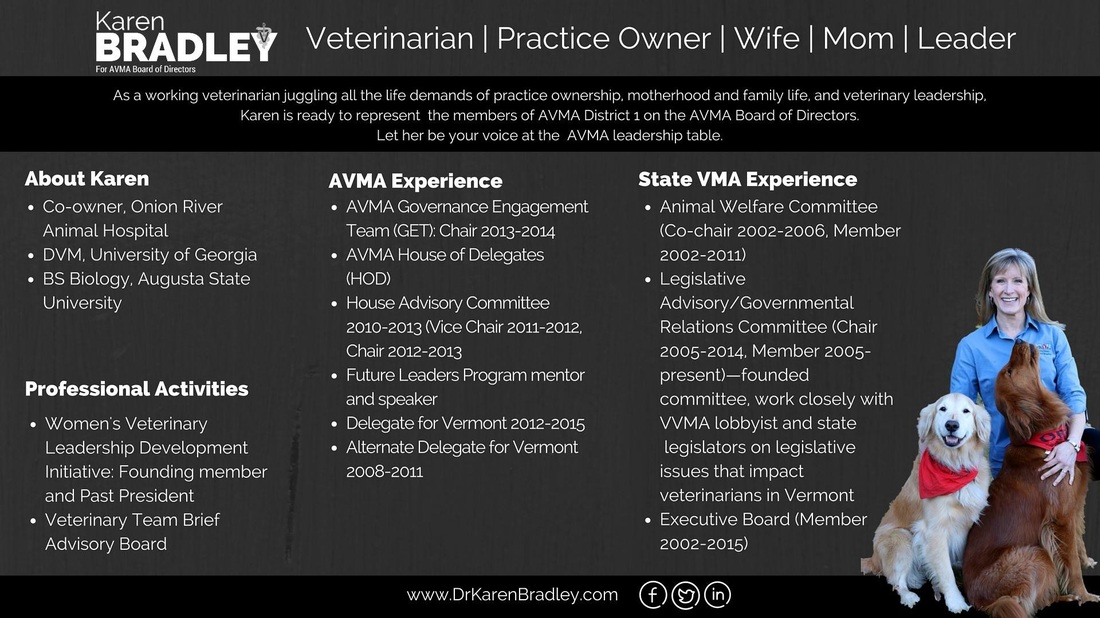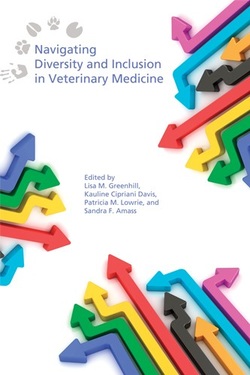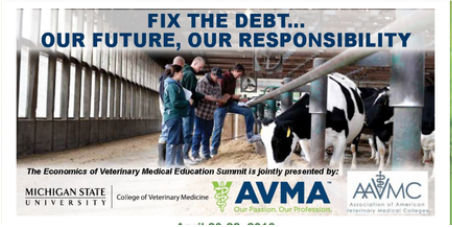
As I shared in a previous blog post, the AVMA Board of Directors is the only AVMA Board position that you as an AVMA member directly elect. In many member associations, members directly elect their entire leadership, including the officers of the association. One concern that has surfaced when AVMA governance is discussed is how will the average member know who is a good leader and who is not? A worry expressed by others was the ability to “buy” influence and votes, such as a major veterinary corporation dictating that all of its AVMA member veterinarians vote for a specific candidate. Another was the potential for a major veterinary publication to endorse a candidate and unfairly publicize that candidate. The concern I would like to throw out is that of money.
How much should it cost to run for an AVMA Board position?
Well, there is no entry fee, but there is a cost to the time committed for reaching out through social media and to district state VMAs, sometimes even taking time off work to travel long distances to do so. The state VMAs in District I have been incredibly supportive of both candidates in my Board race. Each has allowed the candidates to speak to their executive boards, provided information in their member newsletters, and Vermont even allowed both candidates to address the VVMA members at their winter business meeting last weekend. The outreach necessary for members to know who you are as a candidate can even require postal mail. Yes, a flyer or letter in the mail is a traditional route of communication from candidates or their nominating organizations, to reach members.
Now here is where the cost can really add up. I looked into this option and calculated the cost of mailing a simple 5x7 postcard to the approximately 8900 veterinarians in District 1 (New York, Maine, New Hampshire, Connecticut, Rhode Island, Massachusetts, Vermont) and postage alone would cost in excess of $3,000. Yes, three thousand dollars. While I am committed to earning your vote for this position, I felt that $3,000+ was better spent invested in my family, my practice, and my efforts to reach AVMA District I members on a more personal, less junk mail kind of level. So in the interest of not throwing my hard-earned savings account into the wind and creating an environmental mess of printed cards, I decided to attach what my flyer would have looked like had it been sent to your postal mailbox.
I realize that for some, a quick snapshot of my qualifications may be the best information, so I have created a virtual mailer, posted here. It will also be available on my Facebook, twitter and Linkedin pages. Please help me share this perspective and my qualifications and get the word out in an environmentally friendly manner by sharing far and wide!



 RSS Feed
RSS Feed